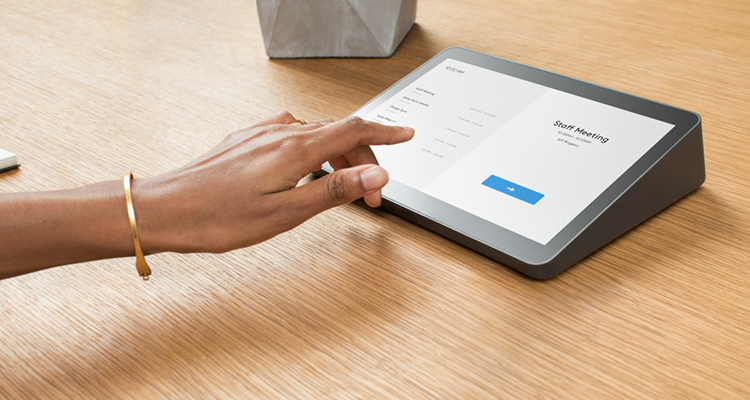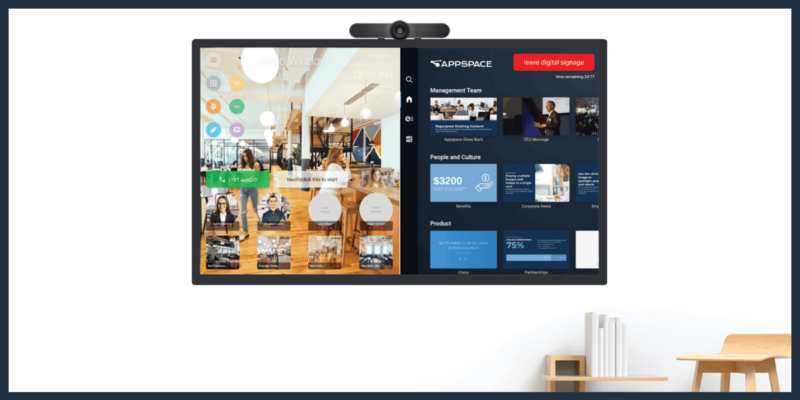Can We Finally Throw Away the Dreaded Videoconferencing Remote?
 Videoconferencing technologies have improved tremendously over the past several years. Cloud services have made it possible to cost effectively scale deployments to thousands of desktops and conference rooms. Improvements in video encoding, compute power and broadband services mean anyone can join a video call, from almost anywhere, via practically any device. And USB conference cams and audio systems allow IT departments to install high-quality room systems in a multitude of spaces unthinkable a few years ago.
Videoconferencing technologies have improved tremendously over the past several years. Cloud services have made it possible to cost effectively scale deployments to thousands of desktops and conference rooms. Improvements in video encoding, compute power and broadband services mean anyone can join a video call, from almost anywhere, via practically any device. And USB conference cams and audio systems allow IT departments to install high-quality room systems in a multitude of spaces unthinkable a few years ago.
But one element of the video conferencing experience has stubbornly remained almost unchanged since the 1980s: the remote control.
The irony is that both end users and IT professionals are nearly unanimous in their dislike for remote controls. End users fear looking inept as they struggle to find the right button and will avoid picking up the remote even if it means going through the entire meeting with the camera facing out the window. And IT professionals resign themselves to always being on call to replace lost remotes or change batteries in dead remotes at a moment’s notice. But those days are coming to an end. Over the past few years, several new approaches to meeting room control have been introduced, making it possible to finally throw away the traditional video conferencing remote control.
- Apps running on a tablet or mobile phone. Several of the VCaaS (video conferencing as a service) vendors, such as Zoom, BlueJeans and Vidyo, have developed apps that users can download to a personal device (tablet or mobile phone) and then use that device to control the meeting room software. This approach replaces the remote control with a user friendly and familiar touch screen UI. The downside of this approach is that it requires everyone to download the app to their personal device and make sure they remember to bring it to the meeting. An alternative is for IT to place a tablet in each room for shared use. Being highly desirable consumer devices, tablets can tend to disappear, thus requiring IT to be on call to replace missing tablets — substituting one problem (replacing lost remotes) with another (replacing stolen tablets).
- Dedicated room systems with touch screen interfaces. Room systems such as Microsoft’s Skype Room System are designed to integrate a touch screen control interface directly into the compute platform that is acting as the meeting room encoder. Like the app running on a mobile device, this approach replaces the remote control with a user-friendly, consistent and familiar user interface. It also eliminates the need to bring a device or for IT to place a consumer device in the meeting room. The downside of this approach is that it limits IT’s ability to use the compute platform of their choice since they are required to use the compute platform that has been designed into the room system.
- USB touch screen controllers. AV controllers have been around for more than a few years, but due to high cost and custom programming requirements, they have largely been confined to boardrooms, auditoriums and executive conference rooms. Recent innovations, among them Logitech Tap, a USB connected touch screen controller, open the door to mass scale deployments. The touch screen controller is connected to the meeting room compute platform via USB, allowing IT to select whatever compute platform and operating system they desire. The room system software recognizes the USB attached screen as the control interface and sends the control screen to that device. Like the app running on a mobile device and the dedicated room system, the USB touch screen replaces the remote control with a user friendly, consistent and familiar user interface. But unlike the app running on a mobile device, there is no need to bring a personal device to the meeting room or for IT to place a consumer device in the room. And, unlike the dedicated room system, IT is not locked into a single compute platform or operating system.
In many ways, it boggles the mind to think that it has taken over three decades to find a better solution to room control. But at long last the average person will be able to pan, tilt and zoom with confidence. I’m personally super excited about it, and I suspect I’m not alone.




